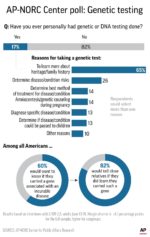The connection between our diet and health is incredibly powerful.
Changing the food that we eat can substantially change the way we look and feel. It is a common misconception in American culture that more protein equals more muscle and less fat. With American obesity at an all time high, it is important to have a good balance of appropriate vitamins and minerals in order to lead long, healthy lives.
The Human Body: Biology at its Finest
Let’s begin with the basics and examine the human body in a physical, anatomical sense. Humans are most closely related to primates with an estimated 99.4 percent of our DNA sequence shared with the chimpanzee. Our hands, teeth and bodies, similar to the primates, are designed for picking up utensils and grinding up plant matter. Compare that to a species of carnivore, such as the lion, that has the claws necessary to rip into flesh, and sharp fangs perfect for hunting and devouring animals. The design of each individual species has adapted over time to favor specific traits in the means of survival.
A further examination of our body design amplifies the substantial link between diet and health. For instance, the human liver has a low tolerance for uric acid, which is a by-product of meat. Whereas, the liver of a carnivorous lion contains uricase, an enzyme used to break down uric acid. Additionally, the human intestine is around thirty feet long; a length that provides adequate time for our bodies to absorb all the nutrients of broken-down plant matter. In contrast, a lion has a shorter intestine designed for quickly getting rid of the acidic waste that animal protein produces.
Think about the source of the juicy protein steak you eat for dinner; the cow builds its large muscle from eating grass and absorbing plant protein. So, what are the effects of a culture that continuously over-consumes animal protein?
Will History Repeat Itself?
Studies have shown that animal-based food diets show a strong association with incidence of cancer, heart disease and other illnesses. The digestion of protein creates different toxins in our body, which are subsequently absorbed into our bloodstream and colon, eventually circulating throughout our entire system and clogging our bodies with by-products.
During World War I, a national experiment in vegetarianism involving three million citizens of Denmark had remarkable findings. Denmark was cut off from all imports of food because of the Allied blockade. To keep the population from starving, the citizens were forced to stop feeding grain to livestock. During the time food was limited, the death rate from disease decreased over 34 percent when compared to the figures from the preceding 18 years. When the war ended, the death rate rose again to almost perfect mathematical precision. Interestingly, similar cases were reported in Britain when a significant decrease in meat consumption occurred during World War II.
Other compelling lab studies illustrate the positive benefits of plant-based proteins. For instance, Dr. James Anderson, of the University of Kentucky, conducted an experiment with 25 Type 2 diabetics. For one week, the patients were to eat a diet recommended by the American Diabetes Association. In the three weeks following, the patients had a diet constructed mainly of plant-protein and little meat. By the end of the experiment 24 out of 25 of the patients with Type 2 diabetes no longer needed insulin shots, and their blood cholesterol had dropped considerably. Since 2000, the rate of Type 2 diabetes has increased dramatically among younger adolescents, and continues to skyrocket along with obesity. Both diseases go hand-in-hand, and switching to plant protein provides a quick fix for both.
Understanding Plant Protein
Protein may be one of the most poorly understood food groups. Calorie for calorie, plant food contains almost twice as much protein as meat. The long chains of amino acids that make up proteins are utilized by our bodies. These amino acid chains link to form different combinations of building blocks, and our bodies use them in different functions, such as making antibodies and hormones or maintaining cell growth.
There are eight essential amino acids needed to create a complete protein. We need to obtain these crucial eight from the food we eat because our bodies cannot manufacture them. The eight essential amino acids are: phenylalanine, valine, lysine, leucine, isoleucine, tryptophan, threonine and methionine. An abundance of these amino acids can be found in fruits and vegetables. Leafy greens such as spinach and romaine, for instance, are prime sources of amino acids, and should be a daily part of our diets. Raw nuts and seeds are also great calorie-dense sources of protein…
Read More: hivehealthmedia.com

